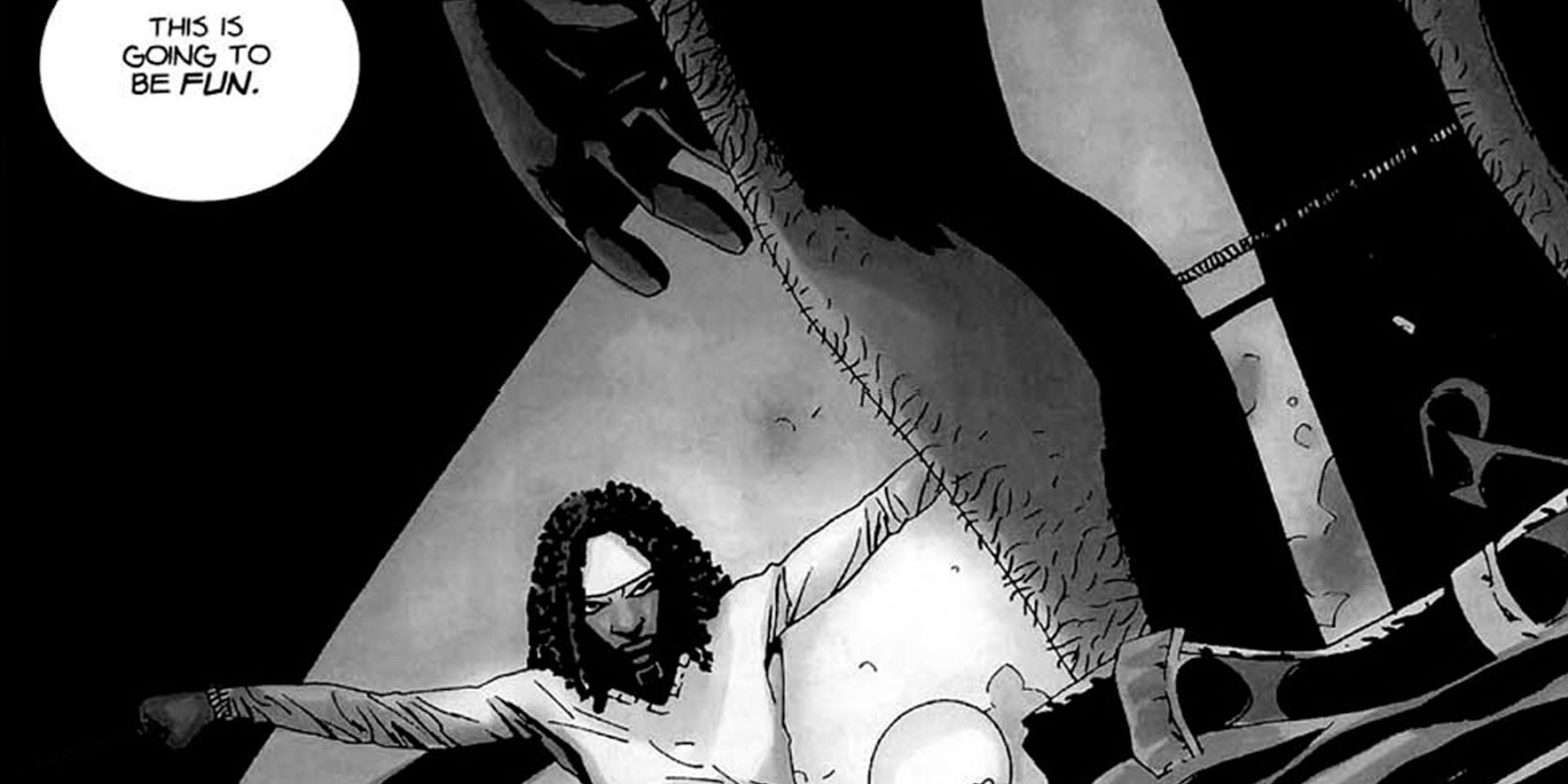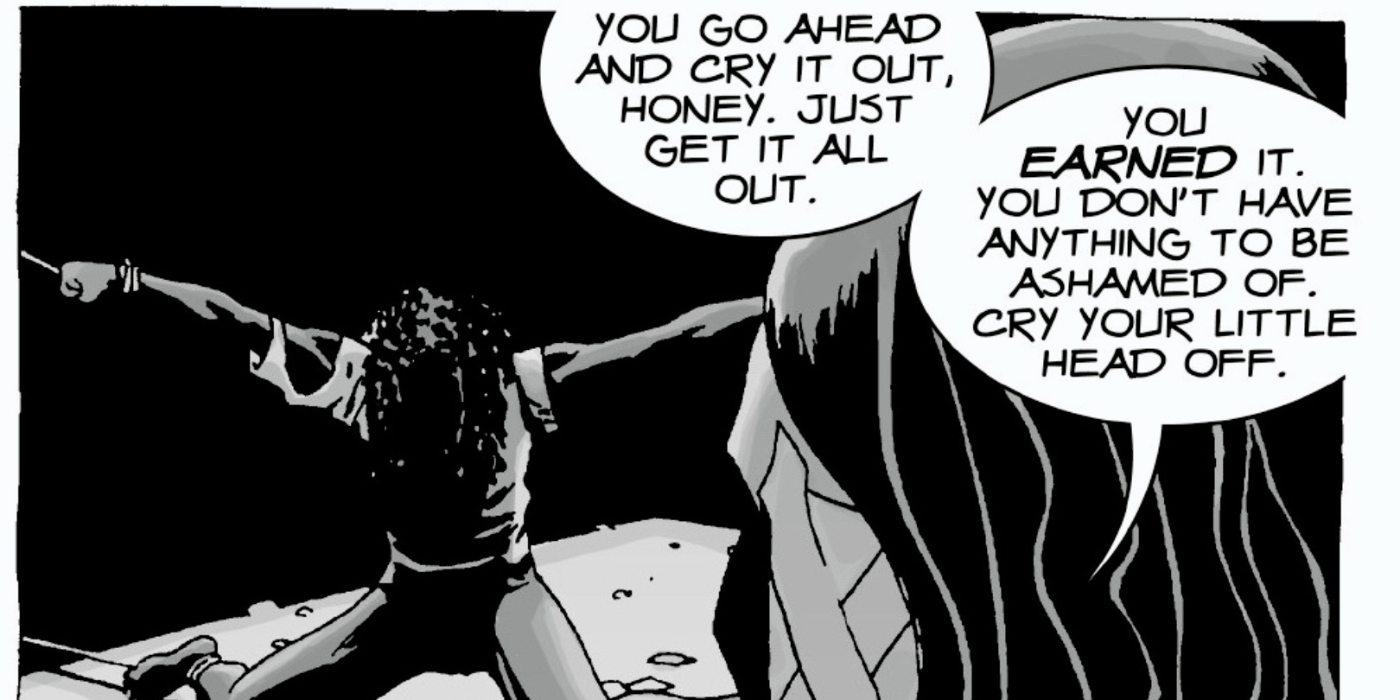Does Robert Kirkman Do the Art for the Walking Dead
TRIGGER Warning: The following article nigh The Walking Dead discusses violence and sexual assault.
While the visual nature of comic books and graphic novels has provided comic book artists with opportunities to tell incredible stories through stunning artwork, the center-communicable nature of comics has them to be subjected to intense scrutiny by those who object to the content of their artwork and storylines. While most of the opposition to the imagery of sure comic books has come up from sources outside of the comic book industry, at that place accept been times when comic volume artists accept objected to the content of each other's artwork or even that of the artwork that they've produced themselves.
While working on the critically acclaimed The Walking Expressionless by Paradigm Comics, serial artist Charlie Adlard initially refused to draw The Walking Dead #28 (by Robert Kirkman, Adlard, and Cliff Rathburn), objecting to the Governor's brutal rape of Michonne Hawthorne, a woman of color. Although Adlard ultimately changed his mind, his short-lived creative conflict with Kirkman raises of import questions regarding the ongoing debate over how comic book creators should portray violence and sexuality.

Afterward capturing Michonne, Rick Grimes, and Glenn Rhee while they were investigating a helicopter crash that occurred almost the makeshift settlement they've formed with other survivors inside an abandoned prison, the Governor personally interrogates them within his office, hoping to learn the location of their settlement so his community can forcibly claim it's resources for themselves. After 1 of his bodyguards cut off a defiant Rick's paw, Michonne retaliated by biting off a large chunk of the Governor's ear, causing the Governor to have Michonne taken to "the room". There, Michonne was tied to the wall in a spread eagle position and violently raped by the Governor, who told her that he planned to rape her at least once every day until she figured out a way to kill herself.
The reservations that Adlard initially held about the content of The Walking Dead #28 echo many of the complaints that take been fabricated about the graphic nature of sure comic books. Since the first of the industry, comic books have been challenged by individuals and organizations who object to the imagery contained within certain comics. However, while events like the publication of Dr. Fredric Wertham's The Seduction of the Innocent and a Tennessee school district'due south recent banning of Art Spiegleman'southward Pulitzer Prize-winning graphic novel Maus were motivated past a disingenuous desire to protect children, many scholars and critics accept raised legitimate concerns over the ways that comic book creators take handled sensitive and mature subjects similar violence against women.

Over the years, many comic book creators accept used the medium to explore mature stories that present challenging themes and ideas, and the visual nature of comics accept immune them to bring these ideas to life in means that traditional literature never could. Although there are limits to the topics that stories told through any medium can explore, many stories that focus on challenging themes merely wouldn't work unless the sensitive elements associated with those themes are included. When he learned of Adlard's objections to the content of The Walking Dead #28, Kirkman responded by arguing that Michonne's rape was meant to exist disturbing and that he believed it was important to not downplay the brutality that divers the postal service-apocalyptic world that depicted in the series. While it is possible to explore challenging themes without including violent and sexual images, including them can assist comic creators present and explore issues that are prevalent in the real world.
Although the content of The Walking Dead #28 is graphic, it does demonstrate how comics tin can be used to confront and explore challenging ideas. While it's ultimately up to the reader to determine for themselves whether or non the imagery of a comic is advisable to the story the creators are trying to tell, calls for the complete exclusion of this sort of imagery from comics deeply undervalue the medium'southward ability to address complex themes and ideas in ways that no other form of storytelling can.
About The Writer
Source: https://www.cbr.com/walking-dead-adlard-michonne/

0 Response to "Does Robert Kirkman Do the Art for the Walking Dead"
Enregistrer un commentaire